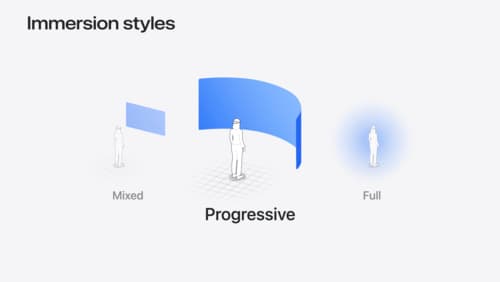How do I create a view in an iOS app that doesn’t rotate while its parent view does rotate as the device rotates
Asked on 2024-07-31
1 search
To create a view in an iOS app that doesn’t rotate while its parent view does rotate as the device rotates, you can use SwiftUI's view modifiers to control the rotation behavior. Specifically, you can apply a rotation effect to the child view that counteracts the rotation of the parent view.
Here's a basic example of how you might achieve this:
import SwiftUI
struct ContentView: View {
@State private var rotationAngle: Angle = .zero
var body: some View {
GeometryReader { geometry in
ZStack {
// Parent view that rotates
Color.blue
.edgesIgnoringSafeArea(.all)
.rotationEffect(rotationAngle)
.onAppear {
// Simulate device rotation
withAnimation(.linear(duration: 2).repeatForever(autoreverses: false)) {
rotationAngle = .degrees(360)
}
}
// Child view that counteracts the rotation
Text("Fixed View")
.font(.largeTitle)
.foregroundColor(.white)
.rotationEffect(-rotationAngle)
}
}
}
}
In this example:
- The parent view (a blue background) rotates continuously.
- The child view (a text label) applies a rotation effect that is the negative of the parent view's rotation, effectively canceling out the rotation and keeping the text label fixed.
For more advanced control and customization, you can explore the capabilities of SwiftUI and UIKit as discussed in the SwiftUI essentials session at WWDC 2024. This session covers various built-in capabilities and low-level APIs that can help you create unique custom experiences in your app.

SwiftUI essentials
Join us on a tour of SwiftUI, Apple’s declarative user interface framework. Learn essential concepts for building apps in SwiftUI, like views, state variables, and layout. Discover the breadth of APIs for building fully featured experiences and crafting unique custom components. Whether you’re brand new to SwiftUI or an experienced developer, you’ll learn how to take advantage of what SwiftUI has to offer when building great apps.

Dive deep into volumes and immersive spaces
Discover powerful new ways to customize volumes and immersive spaces in visionOS. Learn to fine-tune how volumes resize and respond to people moving around them. Make volumes and immersive spaces interact through the power of coordinate conversions. Find out how to make your app react when people adjust immersion with the Digital Crown, and use a surrounding effect to dynamically customize the passthrough tint in your immersive space experience.

Evolve your document launch experience
Make your document-based app stand out, and bring its unique identity into focus with the new document launch experience. Learn how to leverage the new API to customize the first screen people see when they launch your app. Utilize the new system-provided design, and amend it with custom actions, delightful decorative views, and impressive animations.
